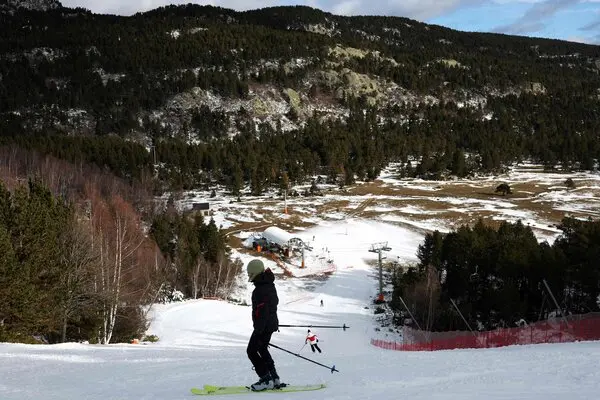The winter’s Future: Techniques for Resilient Bad News in the Face of Climate Challenges for a Ski Resort Nyt Resorts
A New York Times report has revealed insight into a major problem confronting terrible news for a bad news for a ski resort nyt resort nytresorts across the U.S.: a disturbing 82 percent of these retreats have seen a critical decline in snowfall throughout recent years. This drop in snow levels presents significant difficulties for both ski resorts and the networks that depend on winter the travel industry, all while the impacts of environmental change keep on heightening.
The report is a distinct indication of the questionable future the bad news for a ski resort nyt business faces. It underlines the critical requirement for terrible news for a ski resort nyt resorts to embrace more maintainable, eco-accommodating practices to address the diminishing snowfall, rising natural worries, and the more extensive outcomes of environmental change. With both eager skiers and industry pioneers progressively stressed over what’s in store, inquiries regarding the maintainability of ski resorts and winter the travel industry are turning out to be more basic than any other time in recent memory.
Environmental Change Effect on Ski Resorts
The terrible news for a ski resort nyt industry, long viewed as a staple of winter entertainment and a critical supporter of monetary development, is presently standing up to huge obstacles. With worldwide temperatures on the ascent, ski resorts are finding it harder than any time in recent memory to support their activities. The consistent decrease in snowfall strikes a serious catastrophe for an industry that relies vigorously upon chilly, frigid winters to flourish.
Declining Snowfall: An Unforgiving Reality
Ski resorts across the US are wrestling with a perceptible reduction in snowfall, which is disturbing the run of the mill terrible news for a ski resort nyt season and seriously jeopardizing the eventual fate of the business. As environmental change proceeds to speed up and worldwide temperatures climb, this issue is simply expected to deteriorate, pushing ski resorts to investigate imaginative methodologies to remain in business and adjust to the evolving climate.
Environmental Threats to Winter Tourism
The effect of environmental change on ski resorts stretches out a long ways past a diminishing in snowfall. Resorts are currently confronting outrageous climate occasions, whimsical precipitation designs, and the corruption of neighborhood biological systems, all of which present serious dangers. These difficulties can bring about more limited ski seasons, less guests, and higher functional expenses as resorts battle to oversee eccentric circumstances and adjust to a quickly evolving climate.
Environmental Threat Impact on Ski Resorts
| Environmental Threat | Impact on Ski Resorts |
| Declining Snowfall | Shortened ski seasons, reduced visitor numbers, increased reliance on artificial snowmaking |
| Extreme Weather Events | Damage to infrastructure, disruption of operations, safety concerns for visitors |
| Habitat Degradation | Loss of natural landscapes, reduced appeal for eco-conscious tourists, increased environmental impact |
The bad news for a ski resort nyt industry is facing mounting challenges as a result of climate change. To guarantee the eventual fate of winter the travel industry, ski resorts need to take on imaginative and versatile techniques that can assist them with flourishing in this moving environment. By embracing new innovations and reasonable practices, they can more readily deal with the impacts of warming temperatures and diminished snowfall, while proceeding to offer paramount encounters for winter lovers.
Bad News for a Ski Resort: The NYT Report
A significant ski resort is wrestling with huge difficulties, as point by point in a new article by The New York Times. The piece reveals insight into the developing troubles looked by winter the travel industry objections across the U.S., with environmental change at the front line of these worries.
The report features how the retreat is answering the continuous effects of environmental change, especially diminished snowfall and more limited terrible news for a ski resort nyt seasons. To adjust, the hotel has put vigorously in snowmaking innovations and extended its contributions past skiing, consolidating different new exercises to draw in guests all year. In any case, these drives accompany steep monetary expenses, further stressing the retreat’s assets.
Notwithstanding these functional difficulties, the article addresses the natural worries tormenting the hotel, for example, water shortage and the expanded energy requests related with snow creation. These issues have constrained ski resorts to reconsider their manageability rehearses and consider long haul methodologies to lessen their ecological impression.
The grim reality outlined in the NYT article reflects a broader issue affecting bad news for a ski resort nytresorts nationwide. With many winter tourism destinations facing similar hurdles, there is an urgent need for innovative solutions to help the industry adapt and survive in a rapidly changing climate.
| Key Challenges Facing the Ski Resort | Potential Impacts |
| Declining Snowfall and Shorter Ski Seasons | Reduced revenue, job losses, and economic strain on the local community |
| Increased Energy Consumption and Water Scarcity | Higher operating costs, environmental concerns, and regulatory pressure |
| Diversifying Activities and Investing in Snowmaking | Significant financial investments, with uncertain returns |
The New York Times report fills in as a reminder for the ski business. Resorts should track down ways of turning out to be more economical, monetarily stable, and mindful of the requirements of their encompassing networks. As winter the travel industry keeps on changing, the way in to the endurance of ski resorts lies in their capacity to improve and adjust to new difficulties.
Adjusting Ski Resorts for Maintainability
In light of the rising effect of environmental change, terrible news for a ski resort nyt resorts are putting forth significant attempts to embrace supportability. By consolidating eco-accommodating advances and sending off inventive drives, they are attempting to get the eventual fate of skiing and snowboarding for a long time into the future.
Green Initiatives for Ski Areas
Ski resorts are progressively embracing eco-cognizant practices to lessen their natural effect. By using sustainable power sources like sun based and wind, they are controlling their tasks in a more manageable way, really eliminating ozone harming substance discharges.
Notwithstanding perfect energy, resorts are zeroing in on water protection. Many have introduced water-efficient snowmaking systems and are recycling water, ensuring a steady snow supply while significantly reducing waste and preserving resources.
| Initiative | Description | Benefits |
| Renewable Energy | Installation of solar and wind power systems to power resort operations | Reduced carbon footprint, sustainable energy source |
| Water Conservation | Water-efficient snowmaking systems and water recycling programs | Conserve water resources, ensure reliable snow supply |
| Waste Management | Comprehensive recycling and composting programs, reduction of single-use plastics | Reduce waste, promote a circular economy |
Ski resorts are also tackling waste management by ramping up recycling programs and minimizing plastic use, paving the way for a more sustainable future.
By embracing eco-friendly practices, these resorts showcase their dedication to environmental responsibility. Such initiatives play a vital role in the broader movement toward sustainable living, ensuring that the bad news for a ski resort nytindustry remains viable for generations to come.
Economic Impact of Low Snowfall
The monetary outcomes of diminishing snowfall are broad for ski resorts and the whole winter the travel industry area. At the point when ski resorts close their entryways because of an absence of snow, it negatively affects nearby economies that intensely rely upon winter the travel industry for their jobs.
The aftermath from ski resort terminations influences the hotels as well as the encompassing organizations that take care of winter sports aficionados. Lodgings, eateries, retail shops, and different administrations that blossom with the deluge of skiers and snowboarders frequently experience a huge decrease in income, coming down on nearby economies.
| Economic Metric | Impact of Ski Resort Closures |
| Job Losses | Thousands of seasonal and year-round jobs in the affected areas |
| Revenue Decline | Significant drop in revenue for the ski resort and related businesses |
| Local Tax Revenues | Decreased tax collections for municipalities and states relying on winter tourism |
As climate change alters snowfall patterns, bad news for a ski resort nyt resorts and winter tourism must adapt to ensure the continued viability of their businesses and communities.
FAQs
1. What is causing the decline in snowfall at ski resorts?
The decline in snowfall at ski resorts is primarily attributed to climate change, which leads to rising global temperatures and changes in precipitation patterns. This results in shorter ski seasons and reduced snowfall in many areas.
2. How are ski resorts adapting to the changing climate?
Ski resorts are implementing various strategies to adapt, including investing in snowmaking technologies, diversifying their recreational offerings, and adopting sustainable practices like renewable energy sources and water conservation measures.
3. What are some environmental concerns associated with ski resorts?
Ski resorts face environmental challenges such as increased water consumption for snowmaking, energy usage, and habitat degradation. These issues necessitate a reevaluation of their sustainability efforts to mitigate their environmental impact.
4. How do ski resort closures affect local economies?
The closure of ski resorts can have significant negative impacts on local economies that rely on winter tourism. Businesses such as hotels, restaurants, and retail shops suffer revenue losses, which can lead to broader economic downturns in those communities.
5. What steps are ski resorts taking to promote sustainability?
Ski resorts are prioritizing sustainability by using green technologies, enhancing recycling initiatives, and reducing plastic usage. They are also focusing on water conservation and harnessing renewable energy sources to reduce their carbon footprint.
Conclusion
The ski industry is at a critical juncture, grappling with the impacts of climate change and declining snowfall. As ski resorts face the challenges of shorter seasons and diminishing snow, the call for innovative solutions and sustainable practices has never been more urgent. By embracing environmentally friendly measures and adapting to changing conditions, ski resorts can strive to secure their future and support the local economies that depend on winter tourism. The commitment to sustainability not only preserves the winter sports industry for future generations but also sets a precedent for responsible tourism in the face of global environmental challenges.
Stay engaged for the latest news and alerts! Hawaii Times






